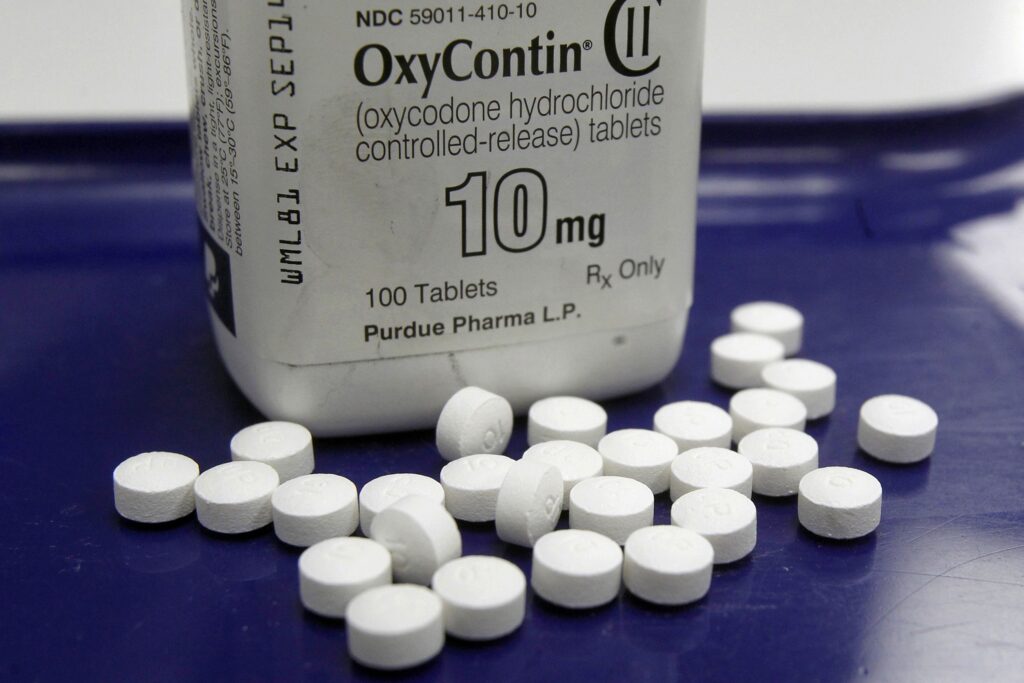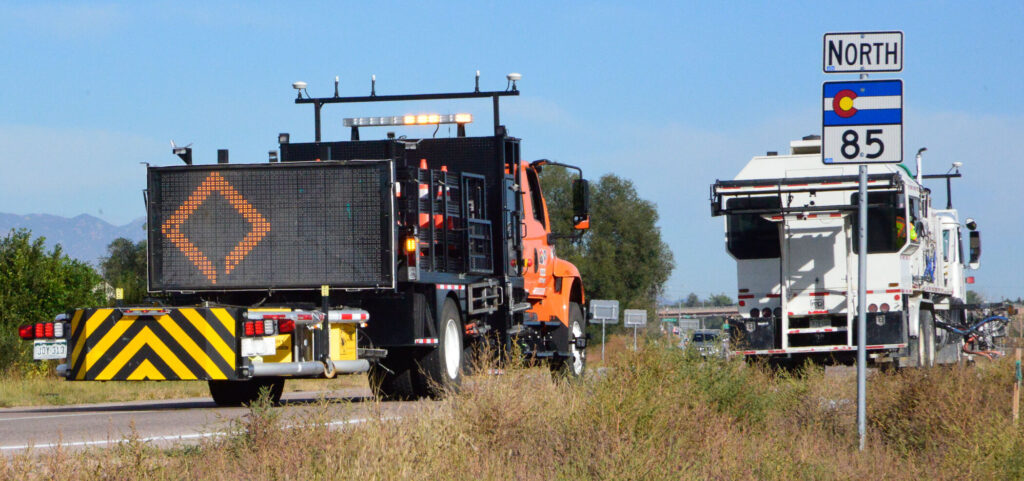Fentanyl deaths surge amid shift in drug market, accelerated by pandemic

The number of Coloradans who’ve fatally overdosed with fentanyl has increased nearly 20-fold in just six years, a trend sparked by changes in the drug market and accelerated by the effects of the COVID-19 pandemic.
In just the past two years, the number of monthly fatal overdoses involving fentanyl has quadrupled, according to state data. Fentanyl is attractive to drug traffickers because it’s potent, cheap and relatively easy to produce and transport. Those factors make it lucrative and, as a result, ubiquitous: Even as law enforcement seizes ever-increasing quantities of fentanyl pills, more slip through. The sheer amount of the drug saturating the market means it can be found in everything from heroin to cocaine to methamphetamine, putting users of those substances at higher risks of accidental overdoses and death.
The result is the worst overdose crisis in the state’s history, experts say, which is killing people who knew they were taking fentanyl alongside those who didn’t, across substances and frequencies of use. The five people who died in Commerce City last weekend, suspected to be a result of accidental fentanyl overdoses, are the latest grim sign of the drug’s presence and what impact it will continue having in the near future.
“Fentanyl is going nowhere,” said Don Stader, an emergency and addiction medicine physician who started a campaign to distribute naloxone to hospitals across Colorado. “I don’t think there’s a great prognosis there – let’s just say that – that we’re going to be able to trim off the fount of fentanyl that’s suddenly here in Colorado and across the country.”
Seizures of 1,000 counterfeit pills used to be worth celebrating, said David Olesky, the acting special agent in charge for the Denver office of the Drug Enforcement Administration. But the scale of fentanyl trafficking now dwarfs that: In the past five months, law enforcement has seized nearly 800,000 counterfeit pills in Colorado, Olesky said. That’s almost 10 times the number of pills seized in the entirety of 2019, and overdoses continue to rise.
The drug’s growing prominence can more tragically be tracked by the deaths it leaves in its wake. Fueled by fentanyl, fatal overdoses overall are rising: Through September, 1,427 Coloradans had fatally overdosed in 2021, a 25% increase from the same period in 2020 and 85% higher than 2019, according to data from the state Department of Public Health and Environment.
Fentanyl was present in more of last year’s deaths – both overall and proportionally – than ever before. Through September, fentanyl was involved in 699 fatal overdoses last year, a 68% increase from the same period in 2020 and an increase of more than 900% from 2018.
In 2015, 41 Coloradans died of an overdose involving fentanyl. In 2021, six counties had more than that by themselves: At least 130 died in Adams County, up from 72 in 2020; 88 came in El Paso County, doubling its previous tally; and 185 died in Denver County, according to state data. Denver’s alone is more than the entire state of Colorado in 2015, 2016 and 2017 combined. Those numbers are likely to increase as the state finishes calculating deaths for the last three months of 2021.
Nationally, more than 100,000 Americans fatally overdosed between March 2020 and March 2021, the first time the nation has eclipsed that milestone in a 12-month span. Olesky said the daily death toll to fentanyl nationally is akin to a commercial airplane going down every day.
When it initially began to arrive in the United States in force several years ago, fentanyl came directly from China, Olesky said. Then the Chinese government cracked down on it, making it and its components controlled substances. Now, the precursor needed to create fentanyl is primarily shipped from China to Mexico, where drug cartels create the drug and send it – often either in powder or counterfeit pill form – up into the U.S.
Several years ago, the overdose crisis was driven by legitimate pills being overprescribed and diverted from their legitimate use. That would lead some users to heroin, Olesky said. Now, regulators and law enforcement have cracked down on those legitimate pills, and heroin is harder to find, thanks to the cartels’ realization that fentanyl is stronger, cheaper and more lucrative.
Heroin has become increasingly difficult to find in Denver, officials say, but fentanyl is omnipresent. It’s an easy economic move for the cartels, Olesky said: Heroin requires acres of land, a large workforce, a cultivation and production process. But fentanyl is synthetic. It can be made in a garage, and it’s more potent than heroin. The chemicals needed to make it aren’t reliant on seasonality or climate, and the drug can be made in huge quantities, year round.
“You can get a kilo of fentanyl from $10,000 to $40,000 per kilo and yield a product in the end that can get you $2 million to $3 million in revenue,” Olesky said. “Why wouldn’t I go with this?”
The drug is often pressed into pills that look like legitimate Xanax, hydrocodone or OxyContin tablets. One mother who spoke at a press conference in December said her son took what he thought was an opiate, but the pill was actually laced with fentanyl, and he fatally overdosed.
It’s also increasingly being found in other substances. Traffickers flush with fentanyl can use it to pad out a package of heroin, cocaine or meth, giving them more bang for their buck, while further addicting users on a substance that is lethal in small doses. According to the DEA, 2 milligrams of fentanyl is generally considered a lethal dose.
Stader and Olesky said many people who use meth, cocaine, heroin or other substances aren’t aware they’re also ingesting fentanyl. As a result, they have no tolerance prepared for opiates, making the already more powerful synthetic even more dangerous.
The presence of fentanyl in overdoses involving other substances has increased significantly in recent years, state data shows. Meth was present in at least 650 fatal overdoses in 2021. Of those 650, fentanyl was also present in 271, a larger share than 2020. Fentanyl was present in 150 of 235 cocaine overdoses last year, and 58 of 176 heroin deaths.
Fentanyl’s presence is prominent enough across substances that Stader and other experts say test strips, which can be used to reveal fentanyl’s presence in another drug, won’t be necessary for much longer.
But Stader said that trend makes broad availability and access of naloxone, which can reverse opioid-related overdoses, all the more vital.
Though some are unaware that they’re ingesting fentanyl, plenty of users are knowingly taking it, Stader said. More patients self-identify as using fentanyl than heroin, he said, “a very dramatic shift from before COVID.”
Last year, a number of experts told The Denver Gazette that the social isolation and broad mental health declines brought on by the pandemic had helped accelerate the fatal overdose crisis. Fentanyl had been a steadily building fire, but COVID’s arrival was akin to pouring gasoline atop the blaze.
Gazette reporter Evan Wyloge contributed to this report.
More information on how to obtain naloxone can be found on the state’s website; Denver residents can get information on obtaining the medication here.












